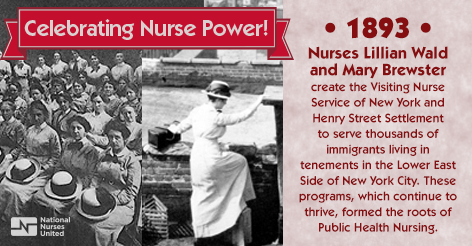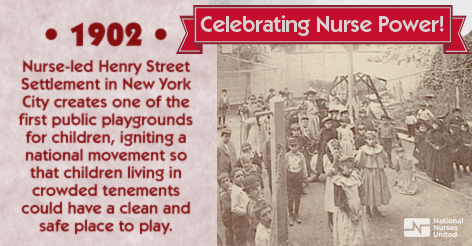Recovering from pneumonia is an unusual experience in the 10-bed intensive care unit at the Carolinas HealthCare System hospital in rural Lincolnton, North Carolina. The small hospital has its regular staff in Lincolnton, but Richard Gilbert, one of the ICU patients, has an extra nurse who is 45 miles away.
That registered nurse, Cassie Gregor, sits in front of six computer screens in an office building. She wears a headset, and her voice is piped into Gilbert’s room via computer speakers.
A doorbell sounds before the camera turns on, alerting Gilbert that the nurse is looking in. They chit-chat as Gregor monitors Gilbert’s vital signs. The nurse asks how he’s feeling and if there’s anything he needs.
Carolinas HealthCare System monitors ICUs in 10 of its hospitals from this command center near Charlotte. The command center is staffed 24-7 with a rotating crew of seven to nine nurses and doctors who specialize in critical care. Everyone on the team also does bedside shifts.
Carolinas HealthCare started this project about two years ago and says it’s good for staff and patients.
For one thing, medical staff at the command center can maintain a constant focus on patients. The command center is quiet — none of the alarms are going off that most ICUs need to alert nurses and doctors down the hall that they’re needed. Dr. Scott Lindblom says it’s a nice change of pace.
The peace, he says, “makes it a much more pleasant environment actually to work in than what we’re used to — the usual chaos of the ICU.”
Nurse Kimberly Purtill agrees.
“We might see a trend up with their white blood cells,” Purtill says, or “a trend up with their temperature, and their blood pressure going down.” All those symptoms might be warning signs of an infection.
“If you were off yesterday as a bedside nurse, and you’re on today, you don’t have the picture from yesterday,” she continues.
But the command center staff has easy access to medical histories and other data on the computer screen, she says, so it’s easy to give the bedside staff a heads up.
Lindblom oversees critical care for Carolinas HealthCare System and says there are clear signs the virtual ICU is working.
“We’re taking care of more patients than we were two years ago,” he says, “and across the system, our mortality rate is dropping … and our length of stay is dropping. It’s almost the perfect storm of good care.”
Among the 10 hospitals in the program, ICU mortality is down 5 percent and length of stay is down 6 percent. Lindblom says virtual care doesn’t get all the credit. He notes the hospitals have also rolled out a program to better manage sepsis, which is a leading cause of death. But Lindblom says that virtual care helps with that program and nearly everything else in the ICU.
Leah Binder is president of The Leapfrog Group, a national advocate for better hospital care. She said the gold standard is to have critical care doctors on-site, not on-camera.
“However, that’s not always possible for every hospital and particularly in rural areas,” Binder says, “so second to that is a virtual environment.”
As technology leads to better care, she says, it could also lead to lower costs.
In the Midwest, Avera Health estimates its virtual ICU has resulted in $70 million worth of savings over the past 10 years. Deanna Larson, who oversees the project for Avera, says that from one hub in South Dakota, Avera monitors patients as far away as Minnesota and Wyoming.
“I think we quit calculating miles a while back,” she says, and laughs. “It’s a very vast area of land.”
Before virtual care, Larson says, complicated cases were often transferred to major medical centers. Now some of those patients can stay closer to home, and that’s good for them, their families, and the town’s economy.
“Keeping 10 or 12 patients more … means another nursing job that stays local,” Larson says, “maybe another lab tech job. What the technology is really doing is keeping those economics closer to home and helping them maintain viability.”
In other words, it may help the hospital in a small community stay open.
In Lincolnton, a town of about 11,000, Dr. Jessica Fox said her ICU has been much busier.
“The unit went from basically having a couple patients, and closing all the time because we were having to transfer so many patients, “to now being almost full all the time because we’re able to keep patients here, ” Fox says.
From his ICU bed, lifelong farmer Richard Gilbert says the more people looking after him, the better.
“That’s sort of like me and farming,” Gilbert says. “If I’ve got a five-man job, and I go out there with two people, [I] might miss something.” But if you have your whole crew working, he says, “you don’t miss anything. You get it done.”
This story is part of NPR’s reporting partnership with WFAE and Kaiser Health News.
Kaiser Health News (KHN) is a national health policy news service. It is an editorially independent program of the Henry J. Kaiser Family Foundation.



 On this night, three CNA registered nurses have joined in the canvassing: Mary Roth, a Kaiser Vallejo advice nurse and 29-year Richmond resident; Johanna Lavorando, a Kaiser Richmond Medical/Surgical nurse and former Richmond resident of 8 years; and Maria Sahagun, a 10-year Richmond resident and former registered nurse at the recently closed
On this night, three CNA registered nurses have joined in the canvassing: Mary Roth, a Kaiser Vallejo advice nurse and 29-year Richmond resident; Johanna Lavorando, a Kaiser Richmond Medical/Surgical nurse and former Richmond resident of 8 years; and Maria Sahagun, a 10-year Richmond resident and former registered nurse at the recently closed 